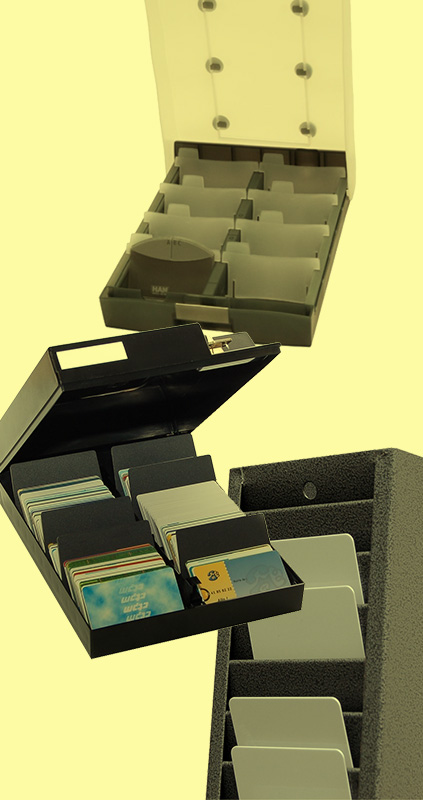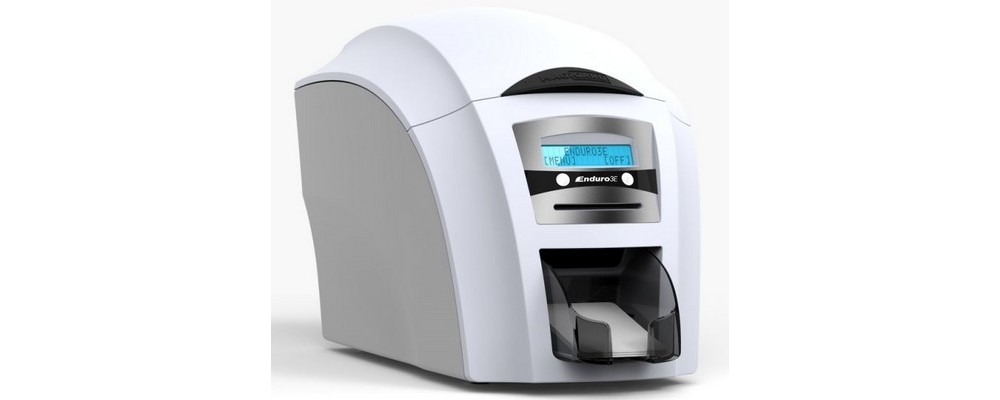Plastic badges and cards can be found in many fields of activity and for a wide variety of uses. In order to meet the needs of a wide range of customers, manufacturers of printing solutions have developed a wide range of plastic card printers with many options. This proliferation of models on the market is a boon to the consumer who can select a printer that meets his or her exact needs. However, this makes the purchasing process laborious and complex.
In order to define the best printer model for your business, you need to ask yourself the right questions.
What type of cards do you want to produce?
This question may seem trivial but there are many types of plastic badges for very different uses (employee badges, transport cards, bank cards...). Some printer models being very specialized, it is necessary to define precisely the technical constraints you will face.
Investing in a "high-end"or with many options is not always a good idea. It can be counterproductive and costly if those options don't specifically address one of your needs.
For example, there is no need to invest in a model with a data encryption system to produce loyalty cards cards or visitor badges.
Read also our file: Why produce loyalty cards
What formats and materials?
The vast majority of cards and plastic badges are made of PVC. However, there are models made of polycarbonate, ABS or cardboard. You have to be careful when buying a printer because the printing technology depends on the material used.
Next comes the question of the size and thickness of the badge.
The thickness will have an impact on the solidity as well as on the "qualitative" aspect of your cards. Printers as a whole accept a range of thicknesses from 0.5 mm to 1 mm. Some models go from 0.25 mm to 1.5 mm.
The size of your cards is also a factor. Most printers produce badges in CR80 format (85,7 * 54,03 mm), which is the size of the different cards in your wallet (credit card, loyalty card, health card...)
Other more specific sizes exist and require particular printers. The most notable are the mini-cards (28 * 54 mm) very popular for loyalty cards and the large size (105 x 148 mm).
To learn more, you can consult our file on the different formats of badges.
What design for your badges?
It is tempting to think that this question is secondary and that it will always be time to think about it and to do some tests once the machine is in hand. However, two aspects of the aesthetics of your badges are directly linked to the technical characteristics of the printer.
Color or Monochrome?
The monochrome printers are to be preferred for simple cards such as the employee badges badges or visitor badges with specific information such as name, function, etc. You will save money at the time of purchase and for each badge printed.
If you want to use photos, graphic images or your company logo on your cards, it is best to have a color printer to optimize readability and aesthetics.
Double-sided or single-sided?
The answer here is quite simple, depending on how much information you want to put on your badge. If it is possible to place them clearly and legibly on one side only, this is the best option.
Please note that if you occasionally need to produce a double-sided badgeyou can always do it manually by passing the card through the printer.
How much and how often?
The card printers can be grouped into 4 categories in terms of their annual printing capacity:
- from 1 to 500 units
- from 500 to 5000 units
- from 5000-10 000 units
- + More than 10,000 units
In the case of very large production runs, it is preferable to opt for a printer with a feeder and a high capacity card receptacle in order to avoid in order to avoid too many manipulations.
The printing speed is a secondary criterion in many cases but can be essential in some particular situations such as for the production of visitor badges in real time or during event-based trade shows.
If you want to know more about the technical characteristics of the printers you can consult our guide to plastic card printers.
Do you need to store data on your badges?
If you want to produce more sophisticated cards than just identification badgescards, such as access cardscards, bank cards or transport cards, you will need to buy a printer capable of encoding data.
There are 3 types of cards that can store digital data
Magnetic stripe cards:
Magnetic stripes are those black bands found at the bottom of some cards. They are inexpensive to produce but support very little data. They are found in particular on loyalty cards, or on hotel room badges.

Smart cards:
The best known examples are the Carte Bleue and the Carte Vitale. They are equipped with a microprocessor chip that can hold from 1k to 64k of data. The most common models are the 2K, 4K and 8K models. The data stored on these cards can be read and written.

Contactless smart cards like the navigo pass (transport card in the Paris region) or for contactless payment have an RFID chip that communicates by hyperfrequency. They do not require physical contact with the reader and are easier to use.

Please note : whatever the type of card you choose, data encoding requires a specific module which is optional in most cases.
What level of security for your badges?
First you have to identify what you want to secure: the card, the data, or the access to the printer.
All printers offer a first level of protection: visual security in the form of personalized graphics or barcode.
Read our feature on Magicard's Holokote security
You can then opt for more advanced visual protections for your card such as UV printing, laser engraving, lamination, holograms, embossing or micro-texts.
For access badges containing sensitive information, data encryption must be used.
Some printers are also equipped with a locking system for the feeder and the card receptacle as well as for the consumable parts.
The data flow between the computer and the printer can also be encrypted.
Conclusion
As we have seen, the possibilities in terms of card printing are numerous and meet a wide variety of needs. It is important to define your needs beforehand in order to choose the most suitable model.
The Elliaden team team is at your disposal to help you find the solution best suited to your needs: for any questions concerning plastic card printers or badges, contact our consultants.









